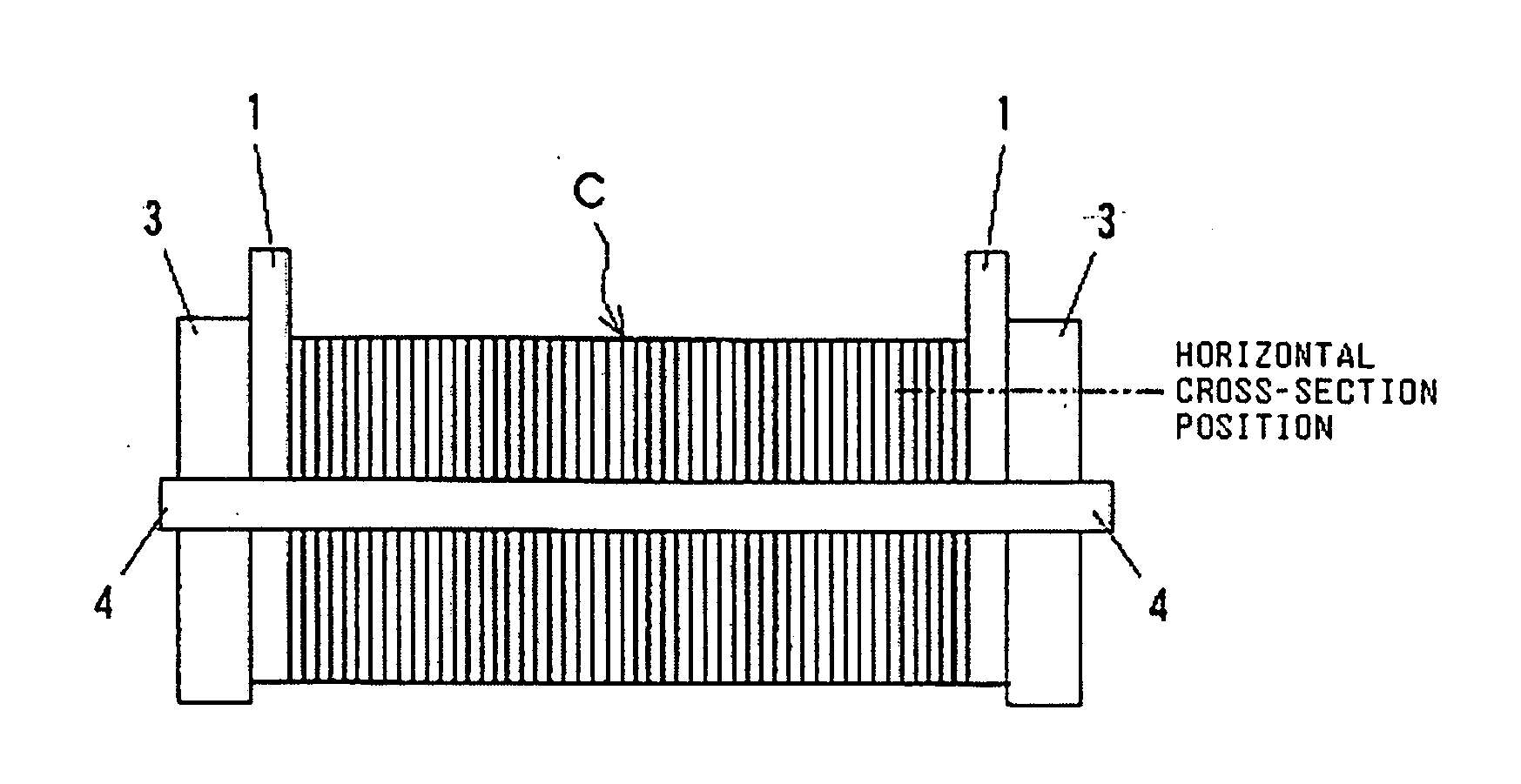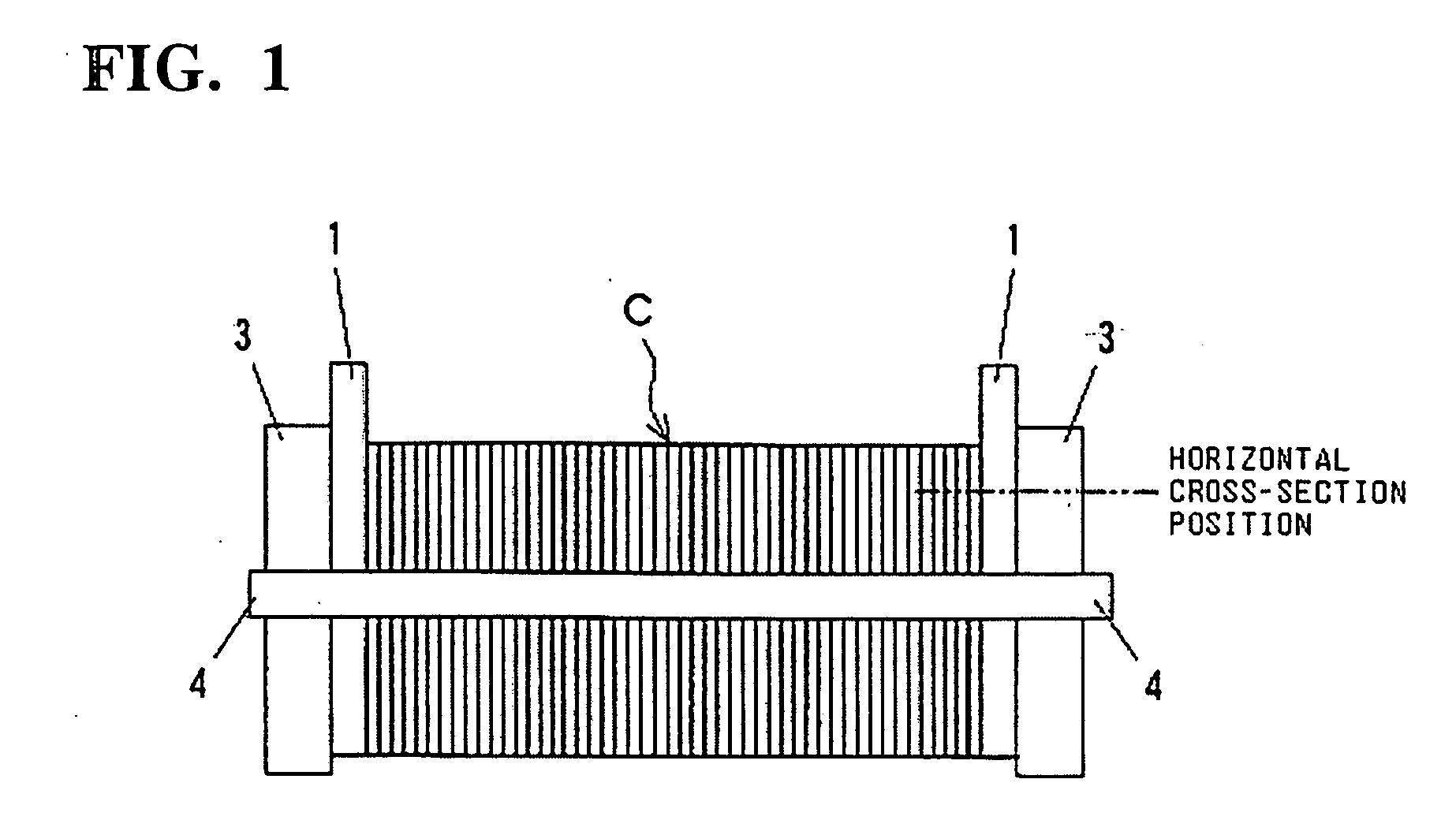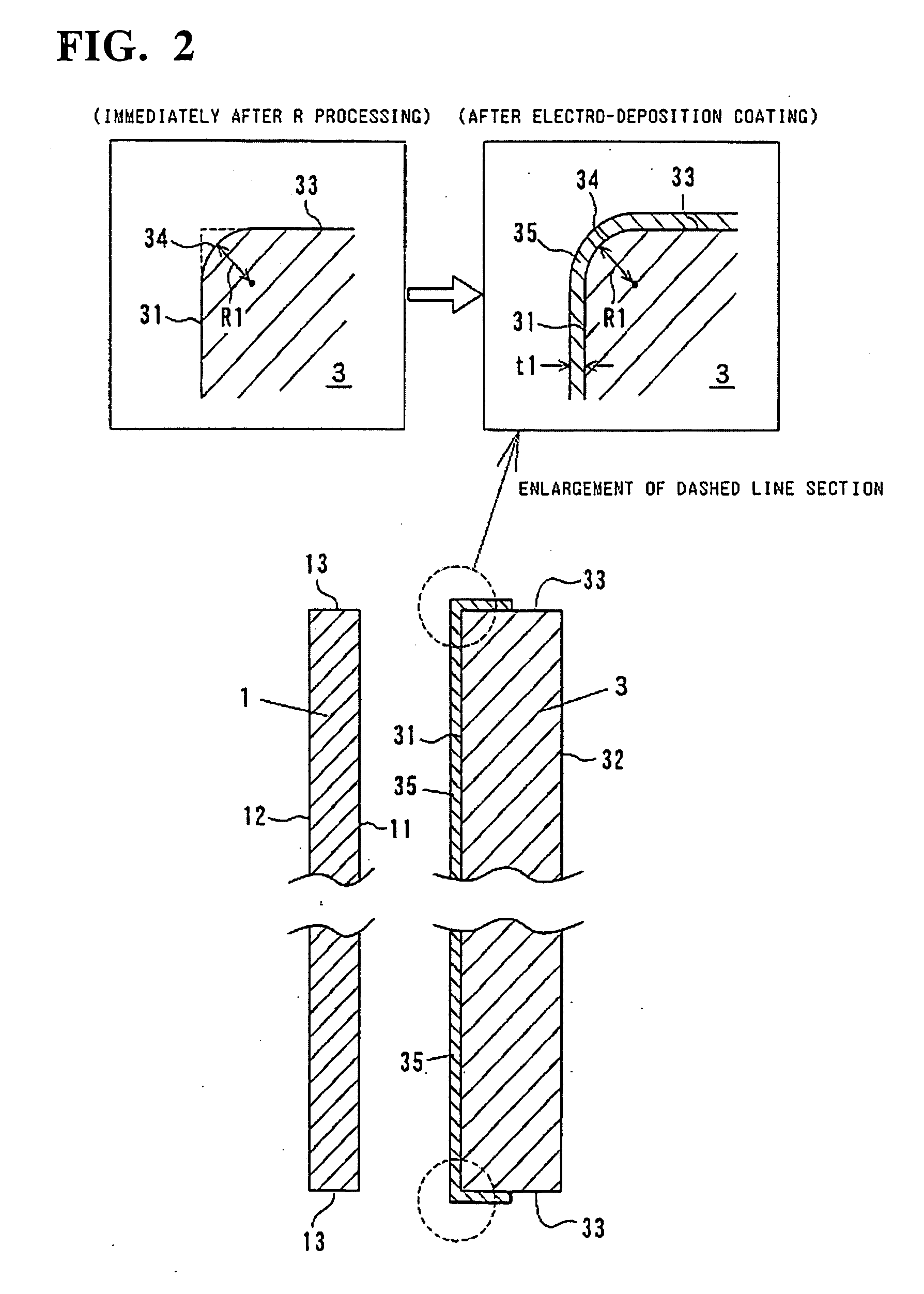Method for manufacturing a fuel-cell stack and terminal plate
a technology of fuel cells and terminal plates, which is applied in the direction of sustainable manufacturing/processing, secondary cell servicing/maintenance, and final product manufacturing, etc., can solve the problems of easy detachment of evaporation, difficult to form a film sheet structure, and poor electrical insulation properties, and achieve excellent adhesion and shape adaptability, good electrical insulation properties, and light weight
- Summary
- Abstract
- Description
- Claims
- Application Information
AI Technical Summary
Benefits of technology
Problems solved by technology
Method used
Image
Examples
example 1
Example of an End Plate
[0061] A stainless steel (SUS316) plate member was prepared as an end plate 3. This stainless steel plate member was formed into a relatively flat rectangular shape having the dimensions, 300 mm (height)×200 mm (width)×20 mm (thickness) approximately. As shown in FIG. 2, this rectangular-shaped end plate 3 has an opposing surface 31 (inner surface) facing to a terminal plate 1, and an opposite surface 32 (outer surface) on the opposite side of the opposing surface 31, and four peripheral side surfaces 33 that define four sides of these two surfaces. Each of the four peripheral surfaces 33 intersects with the opposing surface 31 and opposite surface 32 at right angles.
[0062] First, R processing was performed for the edge-shaped edge (or corner) portions that are formed by the opposing surface 31 of this rectangular-shaped end plate, and each of the peripheral surfaces 33 that intersects with the opposing surface at right angles. R processing was accomplished ...
example 2
Example of a Terminal Plate
[0065] An aluminum alloy plate member was prepared as a terminal plate 1. This aluminum alloy plate member was formed into a relatively flat rectangular shape having the dimensions, 300 mm (height)×200 mm (width)×2 mm (thickness), approximately. As shown in FIG. 3, this rectangular-shaped terminal plate has an opposing surface 11 (outer surface) that faces the end plate 3 and an opposite surface 12 on the opposite side (inner surface) of the opposing surface 11, and four peripheral side surfaces 13 that define the four sides of these two surfaces. Each of the four peripheral surfaces 13 intersects with the opposing surface 11 and opposite surface 12 with at right angles.
[0066] First, R processing was performed for the edge-shaped edge portions that are formed by the opposing surface 11 of this plate-shaped terminal plate, and each of the peripheral surfaces 13 that intersects with the terminal plate at right angles. R processing was accomplished by immer...
PUM
| Property | Measurement | Unit |
|---|---|---|
| Thickness | aaaaa | aaaaa |
| Thickness | aaaaa | aaaaa |
| Thickness | aaaaa | aaaaa |
Abstract
Description
Claims
Application Information
 Login to View More
Login to View More - R&D
- Intellectual Property
- Life Sciences
- Materials
- Tech Scout
- Unparalleled Data Quality
- Higher Quality Content
- 60% Fewer Hallucinations
Browse by: Latest US Patents, China's latest patents, Technical Efficacy Thesaurus, Application Domain, Technology Topic, Popular Technical Reports.
© 2025 PatSnap. All rights reserved.Legal|Privacy policy|Modern Slavery Act Transparency Statement|Sitemap|About US| Contact US: help@patsnap.com



